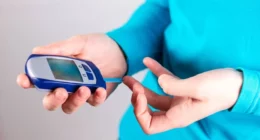We live in a fast-paced world where digital advancements have helped in the availability of health services without having to meet the patient face to face. The current pandemic has further increased the scope and the importance of telemedicine. Experts have suggested that the efficient use of technology in heart care can help in enhancing patient safety and treatment. These technologies include telehealth, remote monitoring, wearables, cardiac imaging, etc, as well as leadless pacemakers and complex ablation (a medical procedure used to treat arrhythmia).
Teleconsultation is being widely used by patients with heart rhythm disorders (cardiac arrhythmia) who need regular medical intervention. Similarly, remote monitoring has become critical as it helps in timely intervention without visiting a hospital. This is because monitoring the heart rhythm for detecting any abnormality plays a crucial role in treating and managing arrhythmias. Cardiac arrhythmia patients who have undergone device implantations such as pacemakers especially require constant monitoring both from the doctor and patient’s end. It is in such situations that technologies like remote monitoring enable heart patients with implants to monitor their heart rhythm within the comfort of their homes or anywhere in remote areas. Remote monitoring also makes it possible for the patient to transfer medical information about their condition to the doctor without meeting them in person.
Role Of Remote Monitoring In Heart Patients
Remote cardiac monitoring, or remote heart monitoring, is a method by which information from a patient’s implantable rhythm management device (pacemaker) can be communicated directly to the cardiac electrophysiologist (doctor) to review a patient’s heart activity. It is a technological advancement for monitoring the heart rate and rhythm of patients suffering from heart conditions such as abnormal heart rhythms and heart failure. Such patients often undergo device implantation like ICD (implantable cardioverter-defibrillator) or CRT-D (cardiac resynchronization therapy defibrillator) for managing their condition. Remote monitor involves syncing a transmitter with the implanted device to collect data on the heart’s rate and rhythm. The transmitter then transfers this information through a secured website and server to the doctor. This helps the doctor, who already has access to the patient’s medical history, offer the best medical advice remotely.
The newer generation devices use a technology that is inbuilt to send the device data to the patient’s smartphone via Bluetooth. The phone then automatically transfers the data to the doctor enabling advanced remote monitor capability. Thus, the patient does not need to carry the transmitter while travelling and is always connected with the doctor through his device and smartphone. This technology has been a boon to the patients, especially in situations like the current pandemic, where in-person consultations come with certain challenges.
Benefits Of Remote Monitoring
- Automatic checks for regular monitoring of the device
- Opportunity for an enhanced quality of life
- Option to reach out to the doctor directly at any time from anywhere
- Convenience and flexibility of securely communicating critical information to the doctor
- Immediately alerts the doctors via email or SMS in case of any life-threatening rhythm or any functioning abnormality in the device
- Patients with remote monitoring devices have been shown to have higher survival than those without it
Digitally empowered healthcare is the need of the hour, and remote care platforms provide patients with the convenience and comfort of accessing qualitative and quantitative healthcare from their homes. New-age technologies like remote monitoring can go a long way in ensuring patients are on top of their heart health and that their doctor is up to date on their condition at any given time.









